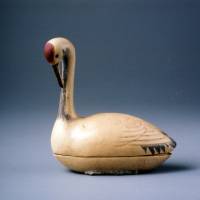April 13-July 8
Iroe (overglaze enamel) ceramics, also known as akae or nishikide, fired twice during the production process. After a clear glaze is applied, they are fired at a high temperature. Then, after being decoratively painted, they are fired again at a low temperature.
The elaborate designs of Imari and Kokutani iroe porcelain were influenced by Chinese culture, while the finest Nabeshima ware, decorated with motifs popular among Japanese people at the time, gradually emerged during the 17th and 18th centuries. Imari ware, which was often produced for export, became particularly popular in Europe.
Examples of Imari, Kokutani, Nabeshima and Kyo-yaki (from Kyoto) are included in this exhibition drawn from the collection of the Sunritz Hattori Museum of Arts.
Sunritz Hattori Museum of Arts; 2-1-1 Kogandori, Suwa, Nagano. Kamisuwa Stn. 9:30 a.m.-4:30 p.m. ¥1,000. Closed Mon. 0266-57-3311; www.sunritz-hattori-museum.or.jp



















With your current subscription plan you can comment on stories. However, before writing your first comment, please create a display name in the Profile section of your subscriber account page.